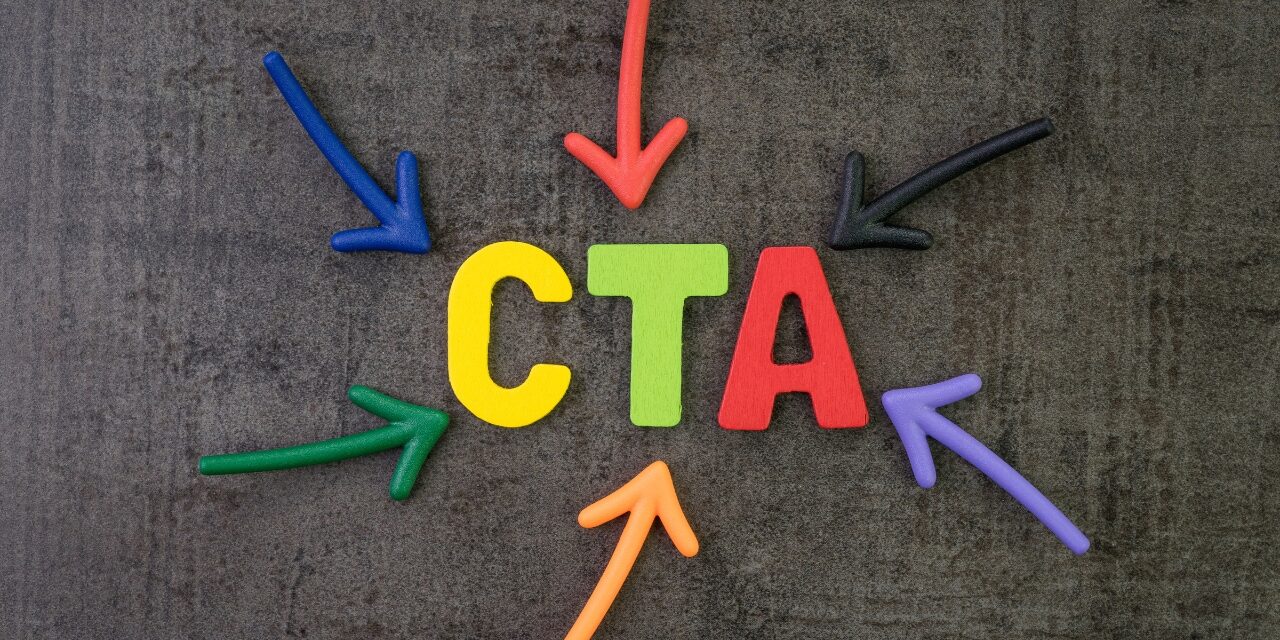Introduction: Setting the Stage for Conversion Success
Welcome to the digital age, where the art of coaching transcends the confines of physical spaces and spreads its wings across the vast digital landscape. As a coach stepping into this realm, your voice needs to not only resonate with clarity but also compel action. This is where the power of a well-crafted Call-to-Action (CTA) becomes your ally in driving conversions and expanding your influence.
A Call-to-Action is more than just a button on your website or a line at the end of your newsletter; it’s the linchpin of your digital marketing strategy. It’s the digital handshake that invites your audience to engage, learn, and ultimately, commit to the journey you’re guiding them on. Whether it’s signing up for a webinar, downloading an e-book, or scheduling a one-on-one session, a compelling CTA turns passive readers into active participants.
But how do you create a CTA that not only captures attention but also captivates the heart? How do you inspire clicks that transform into meaningful interactions? This blog post is your roadmap to unlocking the secrets of effective CTAs. From understanding the psychology behind what drives a user to click, to mastering the art of persuasive copywriting, and strategically placing your CTAs for maximum impact—we’ve got you covered.
For coaches new to digital marketing, this journey through the nuances of compelling CTAs will be both enlightening and practical. You’ll learn not just the theory, but also the actionable steps to craft messages that resonate with your audience’s deepest needs and desires. We’ll explore real-life examples that illustrate the transformative power of CTAs done right, and provide you with the tools to create visuals that speak louder than words.
By the end of this post, you’ll be equipped with the knowledge to create a Call-to-Action that doesn’t just echo in the digital void but drives conversions, fosters client relationships, and amplifies your coaching impact. Let’s embark on this journey to turn your digital touchpoints into gateways of growth and success.
Understanding the Basics of a Compelling Call-to-Action
At its core, a Call-to-Action (CTA) is a prompt that encourages your audience to take a specific step—a direct invitation to engage further with your brand or service. For coaches, this could mean inviting clients to book a discovery call, join a training program, or subscribe to a newsletter for insightful coaching tips. The goal is to transform interest into action, leading to a deeper interaction with your offerings.
A compelling CTA goes beyond mere words on a screen; it’s a beacon that guides potential clients on what to do next. It should be clear, concise, and convey a sense of urgency or benefit. Why should your audience take the desired action? What value will it add to their lives or careers? Your CTA should answer these questions in a nutshell.
The effectiveness of a CTA is measured by its conversion rate—the percentage of users who take the desired action after encountering it. A high conversion rate indicates a successful CTA, one that resonates with the audience and persuades them to move forward in their coaching journey.
Remember, a CTA is not a one-size-fits-all solution. It should be tailored to fit the context of your content, the needs of your audience, and the specific goals of your coaching practice. As we delve deeper into the art of creating powerful CTAs, keep in mind that the best CTAs are those that align with the aspirations of your clients and the essence of your coaching brand.
Compelling Call-to-Action Tips for Coaches
Creating a compelling Call-to-Action is an art that combines psychology, design, and strategic positioning. Here are some tips specifically tailored for coaches to craft CTAs that not only stand out but also resonate with potential clients:
Be Specific and Benefit-Oriented: Your CTA should clearly state what you’re offering and why it’s valuable. Instead of a generic “Click here,” use “Download My Free Coaching Toolkit for Breakthrough Success.” This tells your audience exactly what they’re getting and sets the expectation of the benefit they will receive.
Use Action-Oriented Verbs: Start your CTA with a verb that prompts immediate action, such as “Discover,” “Start,” “Join,” or “Learn.” These words create a sense of movement and progression, which is particularly effective in the coaching industry where transformation is a key selling point.
Create a Sense of Urgency: Encourage quick responses by incorporating time-sensitive language. Phrases like “Book now—spaces are limited!” or “Join the early bird list today!” can increase the click-through rate by instilling a fear of missing out (FOMO).
Leverage Color and Design: The visual aspect of your CTA can significantly affect its performance. Use contrasting colors to make your CTA button or link stand out from the rest of the page. Ensure it’s large enough to be noticed but not so large that it overwhelms.
Keep it Short and Sweet: A concise CTA is a powerful CTA. Aim for no more than five to seven words. Clarity trumps verbosity when you’re aiming for conversions.
Test and Optimize: Not all CTAs will work for every audience. A/B testing different versions can reveal what resonates best with your potential clients. Try varying the wording, color, and placement to find the most effective combination.
Align with Your Coaching Style: Your CTA should be a reflection of your coaching approach. If you’re a life coach promoting a holistic approach, a CTA like “Embark on Your Journey to Wholeness” may speak more to your audience than a straightforward “Contact Me.”
Position Strategically: Place your CTA where it’s most likely to be seen—after an engaging paragraph, at the end of a compelling blog post, or alongside a powerful testimonial. The right placement can make all the difference.
By integrating these compelling call-to-action tips into your digital marketing strategy, you can create CTAs that not only capture attention but also convert that attention into meaningful actions. Remember, the best CTAs are those that offer a clear path forward and make it irresistible for clients to take the next step with you.
Strategies to Drive Conversions with Your CTA
Driving conversions through your Call-to-Action requires a blend of strategy and insight. As a coach, your CTA should be the bridge that connects potential clients to your valuable services. Here are strategies to ensure your CTA not only grabs attention but also compels action:
Understand Your Audience: Tailor your CTA to the specific needs and desires of your target audience. If you’re a fitness coach, a CTA like “Start Your Transformation Journey Today” can be more effective than a generic “Sign Up Now.” Understanding the motivational drivers of your audience enhances the appeal of your CTA.
Offer a Clear Value Proposition: Your CTA should communicate the unique benefits of your coaching. Use phrases that encapsulate the value, such as “Unlock Your Potential with Expert Coaching,” to make it clear what clients stand to gain.
Use Social Proof: Incorporate testimonials or success stories near your CTA. Knowing that others have benefited from your coaching can encourage new clients to take the leap. A CTA like “Join Hundreds of Satisfied Clients!” can be particularly persuasive.
Minimize Risk: Offer a guarantee or a no-obligation trial. A CTA such as “Book Your Free Consultation” reduces the perceived risk and lowers the barrier to entry.
Leverage Multi-Channel CTAs: Don’t limit your CTA to just your website. Use it in email signatures, social media bios, and at the end of your informative blog posts. Consistent messaging across multiple channels can reinforce the call to action.
Optimize for Mobile: With the increasing use of mobile devices, ensure your CTA is clearly visible and easily clickable on smaller screens. A mobile-optimized CTA can significantly increase your conversion rates.
Align CTA with User Journey: Place your CTA at natural decision points in the user journey. After sharing valuable insights in a blog post, a CTA like “Apply These Techniques in a 1-on-1 Session” can be highly effective.
Test and Refine: Continuously test different elements of your CTA, from wording to design. Use analytics to track performance and refine your approach based on real data.
By implementing these effective call-to-action strategies, you can create a pathway for potential clients that is not just inviting but almost irresistible. Each CTA should be a stepping stone that guides them closer to realizing their goals with your coaching expertise, ultimately driving conversions and fostering a thriving coaching practice.
CTA Conversion Techniques for Coaches
For coaches, converting prospects into active clients is the lifeblood of a thriving practice. Here are some CTA conversion techniques that can help you turn casual browsers into committed clients:
Personalize Your Approach: Personalization can significantly boost your CTA’s effectiveness. Use data-driven insights to tailor your message. For instance, if you’re addressing new coaches, a CTA like “Elevate Your Coaching Career with Proven Strategies” can be more impactful than a generic call to action.
Incorporate Visual Cues: Guide your audience towards your CTA with visual cues like arrows or images of people looking towards the button. This subtle technique can direct attention and encourage clicks.
Create Contrast with Color: Use colors that stand out against your website’s palette for your CTA button. The contrast draws the eye and makes the CTA pop. For example, a bright “Schedule Your Session” button on a muted background can be quite effective.
Leverage the Zeigarnik Effect: People are more likely to complete an action if they’ve started it. Break down the sign-up process into smaller steps and use a CTA like “Begin Your Journey” to get them started on a low-commitment path that leads to conversion.
Utilize Action-Packed Language: Use dynamic language that inspires action. Phrases like “Transform Your Life Today” or “Start Achieving Your Goals Now” can energize your audience and make the CTA more compelling.
Offer a Lead Magnet: Provide something of value in exchange for their action. A CTA like “Download Your Free Goal-Setting Workbook” can be a powerful incentive for users to engage with your CTA.
A/B Testing: Test different versions of your CTAs to see which one drives more conversions. Change one variable at a time, such as the wording, color, or placement, and measure performance.
Use Urgency and Scarcity: Create a sense of urgency with limited-time offers or limited availability. A CTA like “Join the Exclusive Webinar—Only 10 Spots Left!” can prompt immediate action.
Ensure Clarity and Simplicity: Your CTA should be straightforward and easy to understand. Avoid jargon or complex terms that might confuse your audience.
By applying these CTA conversion techniques, you can boost conversions and grow your coaching business. Each technique is a tool to engage your audience’s interest and guide them towards taking the decisive step of reaching out to you, setting the stage for a successful coaching relationship.
Call-to-Action Best Practices
To maximize the effectiveness of your Call-to-Action, adhering to best practices is crucial. These guidelines are distilled from the successes of countless digital marketing campaigns and are particularly relevant for coaches looking to enhance their online presence:
Clarity is Key: Your CTA should leave no room for ambiguity. Use clear, jargon-free language that your potential clients can understand immediately. For example, “Get Your Free Coaching Session” is direct and leaves no doubt about what’s being offered.
Keep it Visible: Ensure your CTA stands out visually. It should be one of the most noticeable elements on the page. Place it above the fold on your website or within the first few scrolls to catch early attention.
Emphasize Value: Highlight the benefit that clicking will provide. Use value-driven language that answers the question, “What’s in it for me?” from the client’s perspective.
Limit Choices: Too many CTAs can lead to decision paralysis. Stick to one primary CTA per page or piece of content to guide your audience towards a single, clear action.
Consistent Branding: Your CTA should match your brand’s voice and tone. If your coaching style is empowering and energetic, ensure your CTA reflects that with equally dynamic language.
Responsive Design: With the variety of devices used to access content, ensure your CTA is responsive and looks great on all screens, from desktops to smartphones.
By implementing these call-to-action best practices, you can create a clear path for potential clients to follow, leading to increased engagement and higher conversion rates for your coaching services.
Crafting High-Converting CTAs: A Guide for Coaches
Creating a high-converting CTA is a strategic endeavor that requires understanding both your audience and the unique value you offer as a coach. Here’s a guide to crafting CTAs that can significantly elevate your conversion rates:
Identify the Desired Action: Begin by defining what action you want your audience to take. Is it to sign up for a newsletter, schedule a coaching session, or download a resource? Your CTA should be built around this desired outcome.
Craft a Compelling Message: Your CTA should communicate the benefits of taking action. Use persuasive language that speaks to the results your coaching can deliver. For example, “Transform Your Life in 30 Days” is more compelling than “Click Here.”
Design with Purpose: The design of your CTA should grab attention. Use bold colors, legible fonts, and sufficient white space around your CTA to make it stand out. Ensure that it looks clickable and is easily identifiable as a button or link.
Place with Precision: Position your CTA where it naturally fits within the user’s journey on your page. After a compelling piece of content or a strong testimonial can be ideal spots.
Optimize for Urgency: Use time-sensitive language to create a sense of urgency. Phrases like “Limited Time Offer” or “Join Now and Start Today” can nudge fence-sitters into action.
Make it Accessible: Ensure that your CTA is accessible to all users, including those with disabilities. Use alt text for images and consider the color contrast for those with visual impairments.
Test and Analyze: Use A/B testing to try out different versions of your CTA. Analyze which variations perform the best and optimize accordingly.
Follow Up with a Thank You: Once a user has clicked your CTA and taken the desired action, follow up with a thank you message or page. This not only confirms the action but also reinforces the positive experience with your brand.
By following this guide, you can create a high-converting CTA that resonates with your potential clients and encourages them to take the next step in their coaching journey. Remember, a powerful CTA reflects the transformative experience your coaching promises and invites your audience to embark on that journey with you.
Designing Your CTA for Maximum Conversion
The design of your Call-to-Action can make or break its effectiveness. A CTA that’s visually striking and easy to navigate can significantly increase your conversion rates. Here’s how to design your CTA for maximum impact:
Use Commanding Colors: Choose a color for your CTA button that stands out from the rest of your page but still aligns with your overall design. Colors like red, orange, and green are often used because they are eye-catching and convey a sense of action.
Size Matters: Your CTA button should be large enough to be noticed without overwhelming the rest of your content. The size should signal its importance, so users can’t miss it.
Shape and Space: Opt for a button shape that’s familiar to users, like a rectangle with rounded corners. Ensure there’s enough white space around your CTA to draw the eye directly to it.
Typography: The text on your CTA should be legible and bold. Choose a font size and weight that pops against the button’s background color, ensuring that it’s readable on all devices.
Responsive Design: Your CTA must look good and function well on any device. Test your CTA on different screen sizes to ensure it’s always clickable and visually appealing.
Strategic Placement: Place your CTA where it naturally fits into the flow of the page. After a compelling piece of content or alongside a strong testimonial can be effective placements.
By designing your CTA with these elements in mind, you’ll create a visually appealing prompt that’s optimized for the best possible user experience, leading to higher conversion rates for your coaching services.
Optimizing Your CTA for Higher Conversion Rates
Optimization is key to ensuring your Call-to-Action isn’t just seen but acted upon. Here’s how to fine-tune your CTA for higher conversion rates:
Clarity in Messaging: Your CTA should leave no doubt about what will happen when it’s clicked. Use direct and benefit-focused language to reinforce the value, such as “Start Your Free Trial and Discover More Today.”
Contrast and Visibility: Make sure your CTA button contrasts sharply with the surrounding elements. This visual distinction is crucial in guiding users towards taking action.
Strategic Positioning: Place your CTA in a location where users are most engaged, such as at the end of an informative blog post or next to compelling testimonials that validate your coaching success.
Loading Times: Ensure your CTA loads quickly; a slow-loading page or button can deter potential conversions. Optimize images and button scripts to minimize load times.
Minimize Clicks: The fewer clicks required to take the desired action, the better. Streamline the process so that once the CTA is clicked, users are taken directly to the action point with minimal steps.
Test for Effectiveness: Regularly A/B test different CTA versions to see which one yields better results. Experiment with language, colors, positioning, and size to find the most effective combination.
By optimizing these aspects of your CTA, you can enhance the user experience, reduce friction, and significantly increase the likelihood of converting visitors into clients. Remember, the goal is to make the journey from interest to action as seamless as possible.
The Art of Call-to-Action Copywriting
Masterful copywriting is at the heart of a persuasive Call-to-Action. It’s the difference between a user scrolling past and one who feels compelled to click. Here’s how to refine the art of CTA copywriting:
Invoke Emotion: Use language that stirs the emotions of your audience. Phrases like “Achieve Your Dreams Today” or “Overcome Your Hurdles” can resonate deeply with aspiring individuals seeking coaching.
Be Concise: Your CTA should be a clear command or an irresistible offer, not a sentence. “Book Your Free Session Now” is direct and to the point, leaving no room for confusion.
Focus on Value: Highlight the immediate benefit that clicking will provide. “Get Instant Access to Exclusive Coaching Tips” promises value that’s just a click away.
Use the Active Voice: Write in an active voice to create a sense of urgency and action. “Claim Your Spot” is more compelling than “Spots are available.”
Test and Refine: Continuously test different versions of your CTA copy to see what resonates best with your audience. Pay attention to the words that consistently yield higher conversion rates.
Crafting your CTA with these copywriting principles can significantly enhance its effectiveness. The right words can inspire action, and in the realm of coaching, action is the first step towards transformation.
Leveraging Psychology in Your CTA
The psychological underpinnings of decision-making can greatly influence the effectiveness of your Call-to-Action. Here’s how to leverage psychology to make your CTA more compelling:
Principle of Scarcity: People tend to desire what is in short supply. Use this to your advantage by creating a CTA that suggests limited availability, such as “Only 5 Spots Left for This Exclusive Coaching Program!”
Power of Free: The word ‘free’ has a strong allure. Offering something for nothing, like “Download Your Free Step-by-Step Coaching Guide,” can be a powerful motivator for action.
Fear of Missing Out (FOMO): People hate to miss out. A CTA that implies an opportunity is slipping away, such as “Last Chance to Join the Life-Changing Course!” can trigger an immediate response.
Authority: We are inclined to follow the lead of experts. Highlight your expertise and use it in your CTA, like “Start Your Journey with a Certified Professional Coach Today!”
Commitment Consistency: Once someone takes a small step, they’re more likely to continue. Encourage a small commitment with a low-barrier CTA such as “Watch the Free Coaching Session Preview Now!”
By tapping into these psychological triggers, you can craft CTAs that not only catch the eye but also resonate on a deeper level, encouraging potential clients to take the desired action with a sense of urgency and necessity.
CTA Placement Strategies for Coaches
The placement of your Call-to-Action can be just as critical as its message and design. For coaches, strategic placement can guide potential clients through the decision-making process. Here are some placement strategies:
Above the Fold: Ensure your primary CTA is visible without scrolling, right on the landing page. This caters to immediate decision-makers and captures attention from the get-go.
After High-Value Content: Position CTAs following high-quality, informative content. For example, after a compelling blog post or video, a CTA like “Take the Next Step in Your Personal Growth” can convert readers’ newfound knowledge into action.
Sidebar and Footer: These are traditional spots that visitors expect to find important links. A sidebar CTA can be persistent as users scroll, while a footer CTA catches them at the end of their site journey.
Pop-ups and Slide-ins: Use these for special offers or time-sensitive content. A pop-up with “Schedule Your Free Coaching Session Today!” can be effective, especially if it’s easy to close and doesn’t disrupt the user experience.
In-line with Text: Embed CTAs within the body of your text where they feel like a natural next step, particularly after mentioning the benefits of your coaching services.
By thoughtfully placing your CTAs, you can lead potential clients on a journey that feels intuitive and unforced, culminating in the decision to engage with your coaching services.
Conclusion: Bringing It All Together
Crafting a compelling Call-to-Action is an art that combines psychology, design, and strategic placement to guide potential clients towards making a decision. By understanding the nuances of CTA copywriting, leveraging design for visibility, and placing your CTAs strategically, you can create powerful prompts that resonate with your audience. Remember, the goal is to make the path from interest to action seamless and irresistible. For coaches, a well-crafted CTA isn’t just a button or a line of text—it’s an invitation to transformation and growth, both for you and your clients.
Call-to-Action: Engage with the Reader
Ready to turn your passion for coaching into a thriving online presence? Begin your journey to mastery in digital marketing today. Click below to schedule your free, personalized coaching session. Discover the strategies that will elevate your practice, attract the clients who need your guidance, and grow your business beyond boundaries. Don’t let another day pass without taking this crucial step. Your path to a successful coaching career is just one click away—embrace it now!











